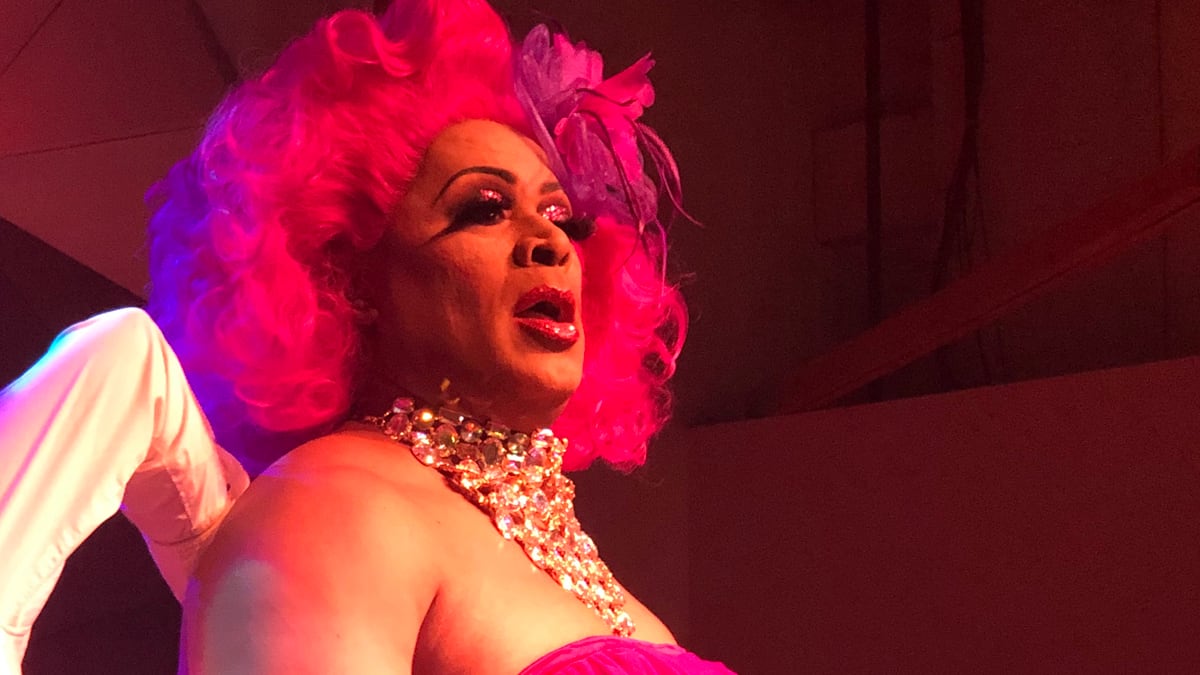When you’re cruising virtual performances while waiting for theaters, clubs and arts venues to reopen, a youth fashion show might not immediately jump to the top of your must-see list. But don’t overlook this year’s fundraiser for Young Audiences of Oregon and Southwest Washington, SH/FT: An Experiment in Fashion Design.
For one, it’s hosted by Poison Waters, one of Portland’s favorite drag queens, who always manages to make a game of bingo into a jaw-dropping, hilarious affair. Second, the models this year are also queens: Syra St. James, Lylac, Lady VaJayJay, Inanna Miss, Cassie Nova and, of course, Poison Waters herself. And third, the fashion show pairs young designers with professionals and challenges them to use recycled materials to make outfits specifically designed for each queen.
So you’ve got young designers creating bizarre trash-gowns for queens who want to work those creations down a runway. Suddenly, this youth fashion show sounds kind of fabulous.
The show’s mistress of ceremonies, Poison Waters, took a moment to discuss upcycled fashion in the drag community and why this year’s fashion show is so important to creative youth.
WW: Could these outfits be described as “couture” gowns?
Poison Waters: Absolutely. “Couture” actually means “handmade.” Every piece in France’s haute couture world is sewn by designers—each bead, each sequin, each feather. Since most of the things in this show are recycled materials—one girl uses duct tape and the other one uses tarot cards—all that has to be attached by hand. They really are couture pieces. They’re walking works of art. You could put these dresses on mannequins and people could just look at them, they’re that great. But to be able to put this art on a live, walking drag queen, it’s going to be fun.
Were the designers assigned materials to work with?
Nothing was assigned. No Team Plastic or Paper. My team had two young folks and two adult designers. We just talked through the process. The funny thing is that the design we started with, by the time we got to the end, it was completely different. Different materials, everything.
How much experience do you personally have with fashion design?
I have a great eye and I know what I like. It’s more like “drag crafting.” I’m a big proponent of hot glue. I’ve been known to cut the sleeves off something and hand stitch them onto something else, or just hot glue a bunch of rhinestones and feathers on. I’ll take something that’s already made and then make my own.
Had the kids making the gowns this year had experience with drag queens before?
They all were aware of drag queens. Some of them were like, “I’ve never met a drag queen before! I’m so excited.” But with RuPaul’s Drag Race, drag is kind of everywhere in mainstream media now. The kids I worked with would talk about their favorite drag queens or favorite drag TV shows. For me, being able to be the first drag queen that some of these people had an interaction with—that’s an important thing. I take it seriously.
Have you seen the designs yet?
Yes, I have. Drag queens, we’re just naturally competitive, and even though this isn’t a contest, I already know that I won. My team knocked it out of the park. But all the outfits are completely different. I chose the models specifically for their differences—physical differences, nationality differences, style differences. Part of the challenge was for the designers to try to match the personality of these individual queens. There’re some that are just wow! An over-the-top costume. Mine I could wear to the opera after this.
How did you get involved with the SH/FT fashion show?
I’ve hosted events for over 30 years here in Portland. The first SH/FT fashion show I hosted wasn’t explicitly for youths to work with professional designers. There were some adult novice designers. But I remember this one young 8-year-old, his outfit blew me away. It was made out of junk, but he made it look so cool. So I’m like, “Hey kid, you’ve got to make me something. Do you want to make something for a drag queen?” And he was like, “Oh that would be so great.”
Something about SH/FT must have really struck you. You work with them every year. What was it?
Particularly this year, I felt the show was really important. There’s been a lot of talk about mental health and people feeling stifled at home. I’ve really been concerned about the kids in our community: how they are adapting and how they’re hanging in there. For adults reaching out and finding assistance for mental health, it’s easier. For a kid, it isn’t as easy. You have to tell somebody about it, which is scary. You have to convince elders in your life that you are not just having a bad day, that you need to talk to somebody.
Creative kids I especially feel for. The kids from this year really wanted to express themselves and had a passion for this project—specifically for designing for drag queens. After meeting their parents, I know the parents as well. The parents at home are struggling: “How do I inspire my kid? How do I keep them engaged?” This project is fun and flashy, but there’s a deeper purpose to it. Helping these kids embrace their creativity and find a sense of purpose in this wacky year—it’s just really important.
WATCH: Shift: An Experiment in Fashion Design streams at 6:30 pm Thursday, May 13. See facebook.com/YoungAudiencesOregon for registration and streaming information.

